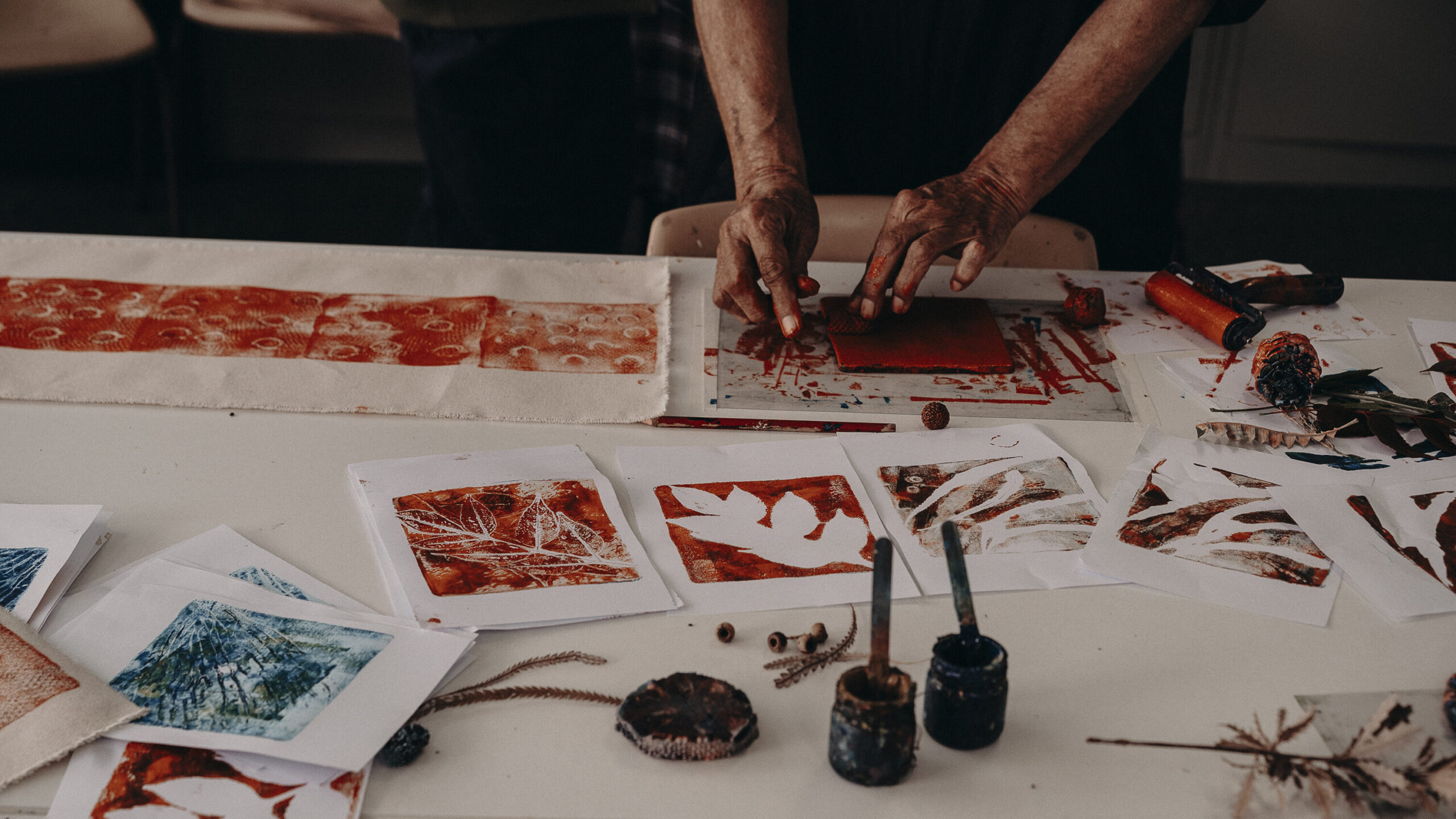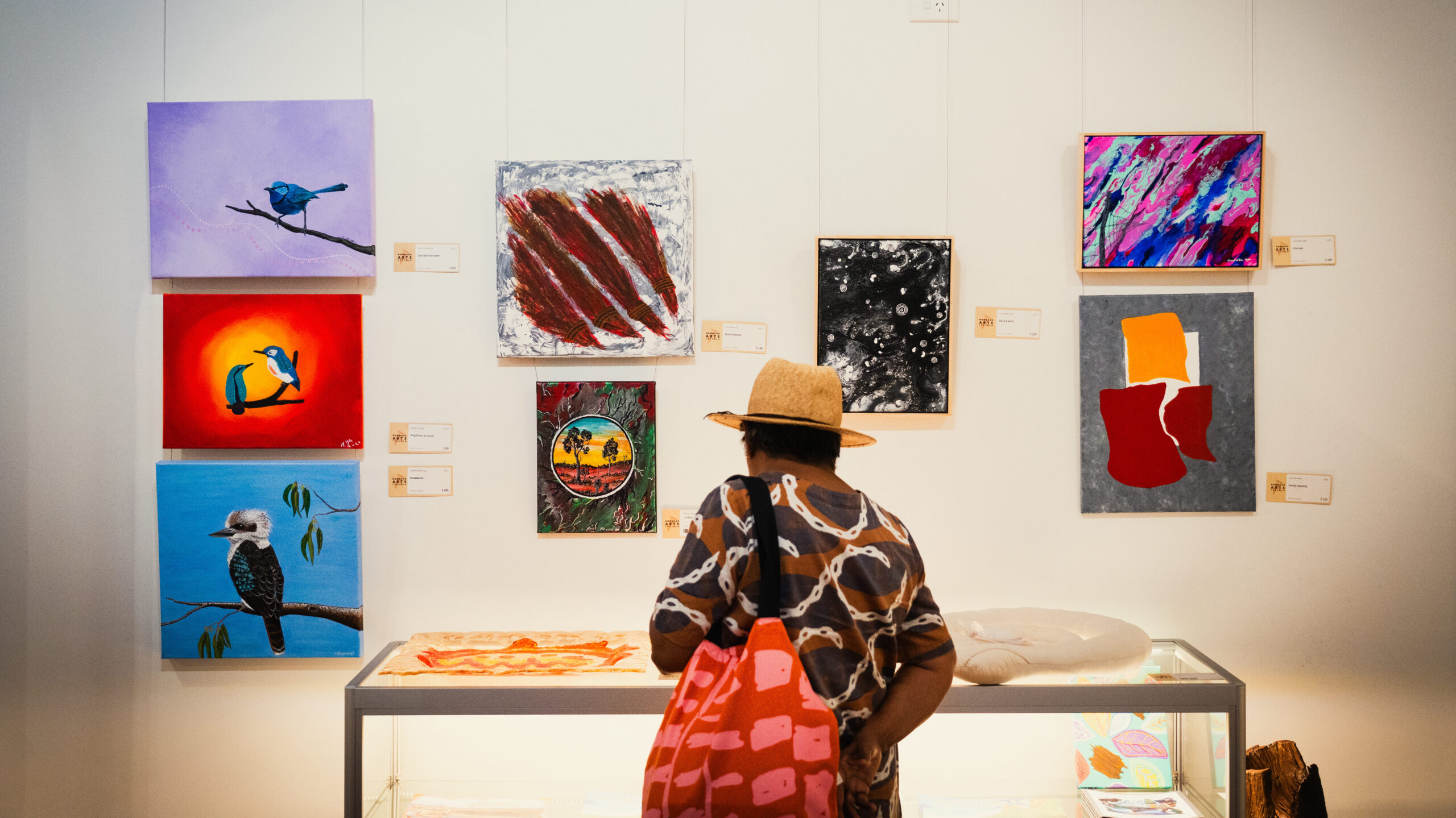

Nestled on Wardandi Noongar Country, Wilger Mia (Bunbury Regional Art Gallery) serves as a vibrant cultural hub for Aboriginal artists of the South West. The Noongar Arts Program (NAP) workshops bring community together to create, connect, and support one another. Through various mediums and styles, the artists seek to share the many stories of their experiences and their connections to moort (family), Boodja (Country) and each other.
"The NAP program gives me the chance to push my creative boundaries. It's a positive colourful space that brings people together."
Rhonda Norman, NAP artist
“We like to come to be around others, to have a laugh, hear the stories from the Old People, hear about how other people see things. You learn so much from each other.”
Kathy Ugle, NAP artist
"It's an artists' collective. We have a stronger voice together. We get to tell our stories through our art and together we can do great things."
Dellas Bennell, NAP artist
Each artist brings their unique vision and style, creating an eclectic collection that celebrates the richness and diversity of contemporary Aboriginal art in the South West.
The Noongar Arts Program is possible thanks to funding from the Indigenous Visual Arts Industry Support (IVAIS) program.
The NAP Shop

Located inside the gallery, the NAP shop offers a selection of dynamic works created by the artists in the program. Showcasing paintings, sculptures, scarves, jewellery, books, and more, the NAP shop presents an ever-changing array of works available for purchase. Visit the shop during gallery opening hours.
For generations, Noongar artists have been intimately connected to their ancestral lands, expressing their profound connection through the medium of painting. This rich tradition finds its roots in the early 1940s when artists like Reynold Hart, Revel Cooper, Parnell Dempster, and others at the Carrolup Mission began to depict their landscapes on canvas.
Notably, the catalyst for this artistic journey was Noel White, the principal at Carrolup, who recognized the children’s raw talent and generously provided them with improved materials. Their newfound resources enabled them to create stunning landscape paintings that transcended the confines of the mission, marking the inception of the Carrolup painting tradition.
The artistry of Carrolup’s young talents gained regional recognition through exhibitions, with a pivotal moment occurring at the Boans exhibition in Perth. Here, Florence Rutter was captivated by the artworks and, upon learning they were the creations of children, felt compelled to visit Carrolup Mission. Subsequently, she embarked on a mission to introduce these young artists to a global audience, taking their works across Australia, New Zealand, Europe, and the USA. Today, their masterpieces find a home in the prestigious Colgate University Art collection.
The legacy of Carrolup has left an indelible mark on contemporary Noongar artists, serving as a source of inspiration. Present-day artists, including Shane Pickett, Sharyn Egan, Laurel Nannup, Athol Farmer, Graham Taylor, Philip Hansen, Peter Farmer, Sandra Hill, Chris Pease, and Ben Pushman, continue to explore their artistic voices while addressing the pressing issues affecting their communities.
Among these artists, Lance Chadd stands out as he pays homage to his Uncle Reynold Hart’s landscape paintings while simultaneously crafting his unique style, notably seen in his exquisite South West landscape compositions using gouache on paper.
Today, Noongar artists push the boundaries of artistic expression, venturing into various media such as painting, prints, pottery, photography, digital art, and installations. They firmly establish themselves within the mainstream of contemporary Australian art, with individuals like Lance Chadd, Shane Pickett, and Chris Pease exemplifying the diverse and dynamic aspects of Noongar art.